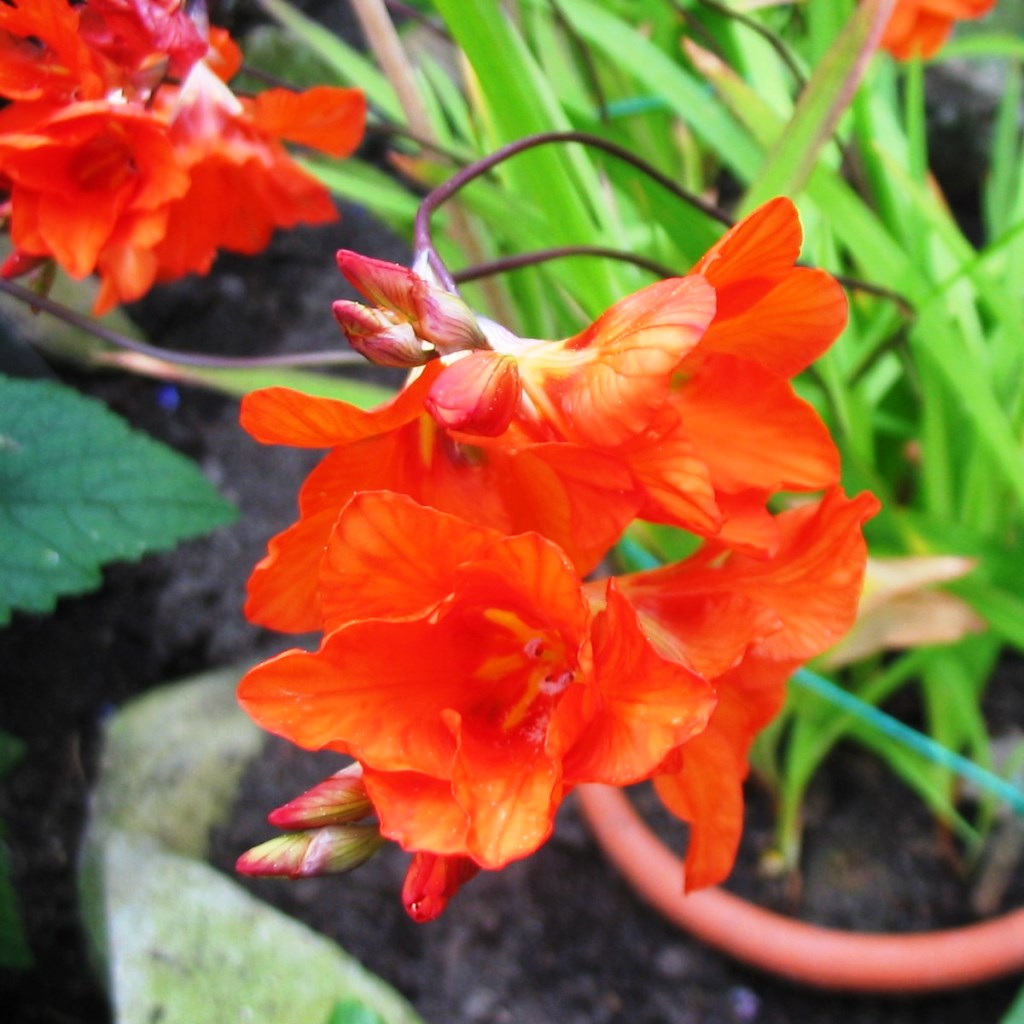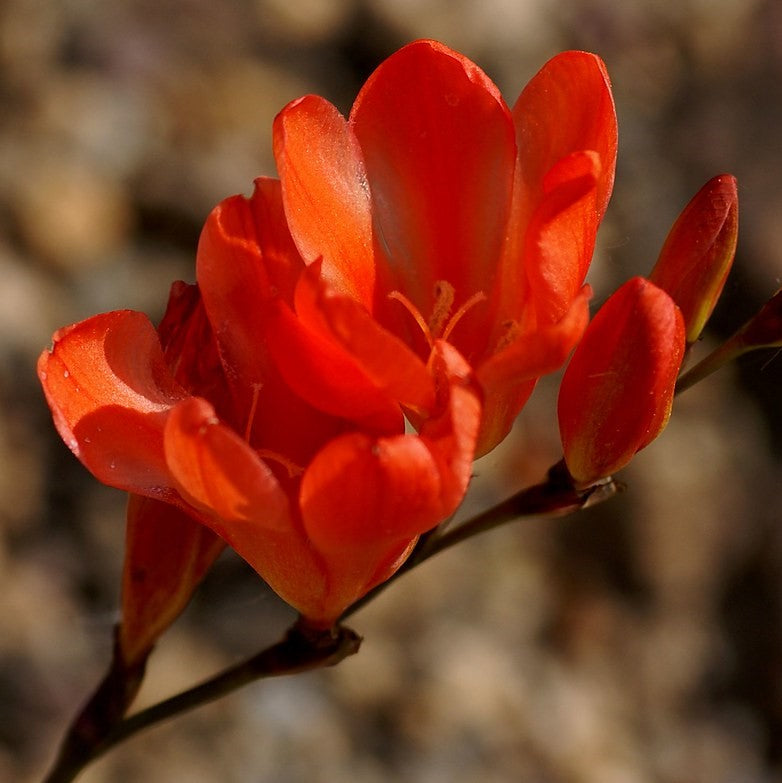Gloriosa Carsonii
Family
Colchicaceae
Origin
South Africa
Description
Tritonia crocata is a striking, late spring and early summer-flowering plant with fiery orange or reddish orange flower sprays and a fan of short, lance-shaped leaves.. It has a flattened corm surrounded by a few layers of fibrous outer tunics and multiplies by cormlets produced around its base. The three lower tepals of the flower have a narrow yellow or dark red central stripe in the throat, and all the tepals have attractive narrow translucent zones or 'windows' on the margins
Environment
A sunny, well-ventilated aspect, a well-drained growing medium, heavy drenching at regular intervals during the growing season and maintenance of a dry period in dormancy are required for the successful cultivation of Tritonia crocata. . Plant the corms in autumn in a sandy soil containing some well-decomposed compost, at a depth of about 2 cm of growing medium above the corm. Corms should be planted close together (about 5 cm apart) to create a massed effect. Allow the growing medium to dry our completely for the summer, or lift them and store in a cool dry place until autumn.
Tritonia crocata grows in clay soils .It is well suited to cultivation in temperate climates but is not resistant to prolonged periods of frost
Landscape Use
Tritonia are night fragrant, quite free flowering over a long period, look rather like fresias and go very well in rock gardens and containers or plant in groups for best effect in a sunny border.It can be grown in containers, window boxes, rock garden pockets and as a front border to larger herbaceous plant.


















